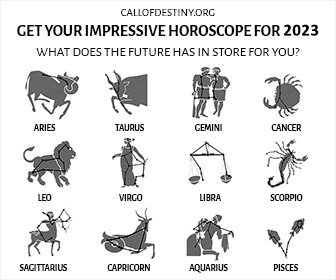Understanding the Essence of Romantic Poetry
Writing a beautiful romantic love poem requires an understanding of several fundamental elements. At the heart of romantic poetry lies the importance of emotions. Emotions serve as the backbone of any love poem, enabling the poet to convey feelings of love, longing, and intimacy. The aim is to evoke deep, resonant emotions within the reader, creating a shared experience of the poet’s emotional landscape.
Imagery plays a crucial role in achieving this emotional connection. Through vivid and evocative descriptions, poets can paint pictures that resonate with the reader’s own experiences and emotions. For instance, in William Wordsworth’s “She Was a Phantom of Delight,” the poet uses rich imagery to describe the ethereal beauty of his beloved, creating a sense of wonder and admiration that deeply touches the reader.
The choice of words is equally significant in romantic poetry. Words must be selected with care to evoke the desired emotions and to create musicality within the poem. The rhythm and flow of the poem can greatly enhance its emotional impact. For example, in John Keats’s “Bright Star,” the carefully chosen words and the rhythmic structure of the poem contribute to the sense of longing and eternal love expressed by the poet.
Romantic poetry often aims to connect with the reader on an intimate level. This is achieved not only through the poet’s personal expression of emotions but also through universal themes of love and passion. By addressing common human experiences, poets like Elizabeth Barrett Browning in her famous sonnet “How Do I Love Thee?” manage to establish a profound connection with the reader, making the emotions expressed feel both personal and universal.
In summary, the essence of romantic poetry lies in its ability to evoke deep emotions, use vivid imagery, and choose words that resonate with the reader. By understanding and mastering these elements, one can write romantic love poems that are both beautiful and impactful.
Choosing the Right Theme and Subject
Choosing the right theme and subject is a crucial step in crafting a beautiful romantic love poem. The theme sets the tone and emotional direction of your poem, while the subject provides the specific focus around which your verses will revolve. Common themes in romantic poetry include longing, admiration, heartbreak, and eternal love. Each of these themes carries its own unique emotional weight and can evoke powerful responses from your readers.
To begin, consider drawing inspiration from personal experiences. Reflect on your own feelings and relationships; these genuine emotions can provide a rich foundation for your poetry. For example, if you have experienced the pangs of unrequited love, you might choose longing as your theme. Alternatively, if you feel deeply enamored with someone, admiration or eternal love could be more fitting.
Nature is another excellent source of inspiration. Romantic poets often use natural elements as metaphors for their emotions. The changing seasons, the beauty of a sunset, or the tranquility of a flowing river can all serve as powerful imagery in your poem. Classical literature also offers a treasure trove of themes and subjects. Reading works by poets such as Shakespeare, Keats, or Shelley can spark ideas and provide insight into how masterful poets have explored the complexities of love.
Once you have a general idea of your theme, it’s essential to narrow down your focus. A cohesive and impactful poem often centers around a specific aspect of the theme. For instance, if your theme is heartbreak, you might focus on the moment of separation or the lingering memories of a lost love. By honing in on a particular subject within your chosen theme, you can create a more vivid and resonant piece.
In summary, selecting the right theme and subject for your romantic love poem involves a blend of introspection, inspiration from nature, and insights from classical literature. By narrowing your focus, you can craft a poem that is both cohesive and emotionally powerful, leaving a lasting impression on your readers.
Crafting the Poem: Structure, Rhyme, and Rhythm
When embarking on the journey of writing a romantic love poem, understanding the technical aspects can significantly enhance its allure and emotional impact. The structure of your poem serves as its foundation, and choosing the right form can set the tone and flow. Traditional forms like sonnets, with their 14-line structure and iambic pentameter, lend a classic, timeless quality to romantic poetry. Conversely, free verse offers more flexibility, allowing you to express emotions without the constraints of a fixed rhyme or meter. Haikus, with their concise 5-7-5 syllable pattern, can capture the essence of a moment or feeling in a few poignant lines.
Rhyme schemes play a crucial role in creating a musical quality that can elevate the beauty of a love poem. Common schemes such as ABAB or AABB provide a sense of order and predictability, which can be soothing to the reader. However, don’t be afraid to experiment with less conventional patterns to convey unique emotions. Meter, the rhythmic structure of a poem, further enhances its lyrical quality. Whether you choose a regular meter, like iambic pentameter, or a more varied one, maintaining a consistent rhythm helps in creating a harmonious flow.
Consistency is key in crafting a romantic love poem. Once you choose a structure and rhyme scheme, adhere to it throughout the poem to avoid disjointedness. This consistency aids in maintaining the reader’s engagement and underscores the emotional depth of your work. Avoid common pitfalls such as forced rhymes, which can disrupt the natural flow, and overly complex language that might obscure your heartfelt message. Instead, focus on clear, evocative imagery and sincere expressions of affection.
In conclusion, the technical aspects of structure, rhyme, and rhythm are not merely formalities but tools to enhance the beauty and emotional resonance of your romantic love poem. By thoughtfully selecting the right form, maintaining consistency, and avoiding common pitfalls, you can craft a poem that truly speaks to the heart.
Editing and Refining Your Poem
Editing and refining your romantic love poem is crucial to achieving the desired emotional impact. Revising allows you to enhance the poem’s depth and resonance, ensuring that each word contributes effectively to the overall message. One essential strategy for self-editing is reading the poem aloud. This practice helps you to detect awkward phrasing, rhythmic inconsistencies, and areas where the emotional flow might falter. The auditory experience can reveal subtleties that are easily missed during silent reading.
Seeking feedback from others is another valuable approach. Sharing your poem with trusted friends, family, or fellow poets can provide fresh perspectives and constructive criticism. Others may identify strengths and weaknesses that you may have overlooked, offering insights into how different audiences might perceive your work. It’s important to be open to suggestions while also staying true to your original vision.
Taking breaks during the editing process is also beneficial. Distancing yourself from your poem for a few days or even weeks allows you to return with a clearer, more objective mindset. This temporal distance can reveal areas for improvement that were previously invisible, enabling you to make more effective revisions.
Common areas for improvement in romantic love poems include word choice, imagery, and emotional resonance. Opt for precise, evocative language that conveys your feelings vividly and authentically. Enhancing imagery can make your poem more vivid and impactful, allowing readers to visualize and emotionally connect with your words. Ensure that each line contributes to the overall emotional journey, avoiding clichés and overused expressions.
Small changes can significantly enhance your poem’s quality. For example, replacing a generic phrase like “I love you” with a more specific and personal sentiment can deepen the emotional impact. Similarly, adjusting the rhythm or altering a single word can transform a good poem into a great one. By meticulously refining each element, you can create a romantic love poem that resonates deeply and beautifully with your readers.





